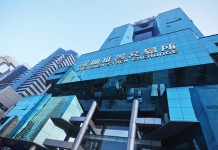ChiNext, the new growth enterprise stock market in Shenzhen, is off to a promising start. ChiNext’s listing rules offer an attractive fund-raising alternative to China’s small and hi-tech companies.
By Michael Fosh, Reed Smith LLP
On 30 October 2009 the first batch of 28 companies was listed on China’s new growth enterprise market in Shenzhen, with a further eight stocks making their debut on 16 December. The average rise for each of the first batch of stocks, of more than 100% on the first day’s trading, suggested a very successful launch. Average initial pricing represented a multiple of around 56 times 2008 earnings, compared to around 25 times on the main board of the Shanghai Stock Exchange. Multiples for the second batch of stocks were even higher, averaging over 80 times earnings, despite the fact that those already listed had lost some of their initial sparkle. Trading has been highly volatile.
The opening of China’s growth enterprise bourse, now officially named ChiNext, has been long awaited. The concept was first floated at least a decade ago. Although Shenzhen established an exchange for small and medium-sized enterprises in 2004, the new market is designed primarily as a fund-raising platform for small enterprises that are innovative and high-tech. It is such entities, generally privately owned, that tend to experience greater difficulty in securing bank financing and will therefore gravitate towards financing from non-banking sources. Fund-raising through an initial public offering (IPO) leading to an exchange listing is, in most cases, an attractive alternative or complement to private equity financing. An IPO and ChiNext listing will be particularly attractive if valuations approaching those of the first and second batch of issuers can be maintained.
Notwithstanding the sound reasons for the establishment of a growth board, the volatility of China’s main bourses and the inherently greater risk associated with investment in small or innovative companies might lead observers to ask whether China is really ready for ChiNext. Indeed, considering the malaise that has afflicted the Hong Kong Growth Enterprise Market (the Hong Kong GEM), it is reasonable to ask what ChiNext can offer that the Hong Kong GEM and other secondary boards do not. The enthusiastic initial response to the initial issuers on ChiNext suggests firm investor interest or, at the very least, that the launch was well timed. The longer term success of ChiNext will, however, be measured by the quality of the issuers assessed over the medium term, the liquidity of the market, and the balance struck by regulators between healthy supervision and the promotion of a growth-orientated investment environment.
You must be a
subscribersubscribersubscribersubscriber
to read this content, please
subscribesubscribesubscribesubscribe
today.
For group subscribers, please click here to access.
Interested in group subscription? Please contact us.






















